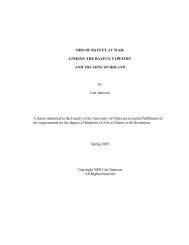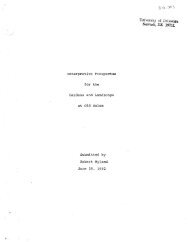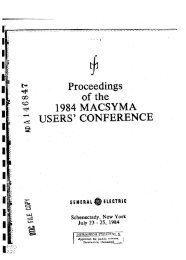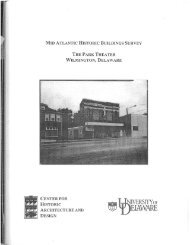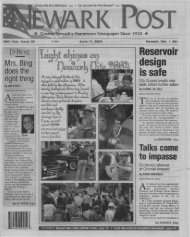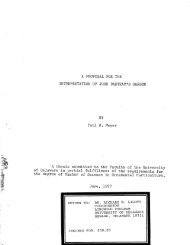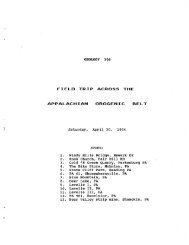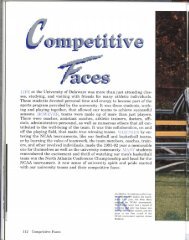mechanics and functions of a smoke house - University of Delaware ...
mechanics and functions of a smoke house - University of Delaware ...
mechanics and functions of a smoke house - University of Delaware ...
Create successful ePaper yourself
Turn your PDF publications into a flip-book with our unique Google optimized e-Paper software.
<strong>and</strong> sprinkle a little salt over them, let them<br />
remain so for five or six days, <strong>and</strong> then make a<br />
pickle which will bear an egg, <strong>and</strong> pour it over<br />
them. Let the whole remain for one month, <strong>and</strong> they<br />
will be fit to <strong>smoke</strong> ..,,61<br />
The question <strong>of</strong> the contents <strong>of</strong> a <strong>smoke</strong> <strong>house</strong> is difficult to<br />
determine as no itemized description or inventory has yet been found. Some<br />
assumptions may be made on the basis <strong>of</strong> general inventories, receipts, <strong>and</strong><br />
accounts. At the Dickinson Smoke House contents/furnishings are certain<br />
only on one particular date-October 1780. In that month, according to<br />
Dickinson's L<strong>and</strong> <strong>and</strong> Business accounts "In the <strong>smoke</strong> House 6 Philada.<br />
powdering tubs upstairs 3 case bottles <strong>of</strong> Madiera Wine & in 2 cases 20 case<br />
Bottles" were located. 62 Powdering tubs are a logical item to find as it is in<br />
them that curing meat is stored. Powdering tubs are mentioned in recipes as<br />
well as in period inventories from Kent County. They were one <strong>of</strong> the local<br />
vessels used to cure meats. (Indeed in 1793, Dickinson orders three new<br />
powdering tubs three meat tubs.) The wine <strong>and</strong> bottles mentioned<br />
suggest that the <strong>smoke</strong> <strong>house</strong> was, for part <strong>of</strong> the year, a place <strong>of</strong> storage.<br />
This dual use is not surprising. The <strong>smoke</strong> <strong>house</strong> was in fact a <strong>smoke</strong> <strong>house</strong><br />
for only a small percentage year. As documented smoking times<br />
illustrate, the smoking process could be as short as one day or as legnthy as<br />
six weeks. In either case the <strong>smoke</strong> <strong>house</strong> was essentially unused (as a<br />
<strong>smoke</strong> <strong>house</strong>) for nearly ten months <strong>of</strong> the year. Even today, a building,<br />
regardless <strong>of</strong> its function, would not remain vacant, <strong>and</strong> surely not on an<br />
eighteenth or nineteenth century farm where buildings were at a premium.<br />
Meat, once <strong>smoke</strong>d, was <strong>of</strong>ten stored in the <strong>smoke</strong> <strong>house</strong> as long as a<br />
temperate climate could be assured. The storage <strong>of</strong> meat however, did not



